Sages are much appreciated for their long flowering. They brighten garden or terrace from spring through autumn. Depending on variety, sages can be annual, biennial or perennial. They bear flowers in spikes, white or brightly coloured, from deep blue to soft pink, via mauve, red, salmon-orange or even bicolour. Easy to grow, sage is also easy to sow directly in soil or in a pot. Discover in our tutorial when and how to sow sage in pots or in soil.

Salvia 'Love and Wishes' is a rather tender sage, grown as an annual
When to sow Sage?
Preferring warmth, sage is a plant whose seeds need a temperature above 18°C to germinate. Sages, especially annual varieties, are therefore sown under cover from March, to obtain a long summer flowering. For this, carry out sowing under a greenhouse, in a conservatory or in your home. Young plants will then be transplanted outdoors from April to June depending on region.
You can also sow seeds directly in the ground in spring, from April to May depending on your climate. This type of sowing is mainly practised in warm regions. Elsewhere, prefer sowing in pots and in warmth. Always wait until risk of frost has passed before sowing.
How to sow sage in a pot?
Required tools:
- a spray bottle;
- seed and cutting compost or a mix of two thirds regular compost with one third coarse sand for planting;
- buckets or pots or a mini-greenhouse;
- sage seeds.
Steps for sowing sage in buckets:
1) Fill your buckets with seed and cutting compost or a mix of two thirds regular compost (or even turf) with one third coarse sand for planting. Substrate should reach about 2 cm from rim. Then firm it down with your hands.
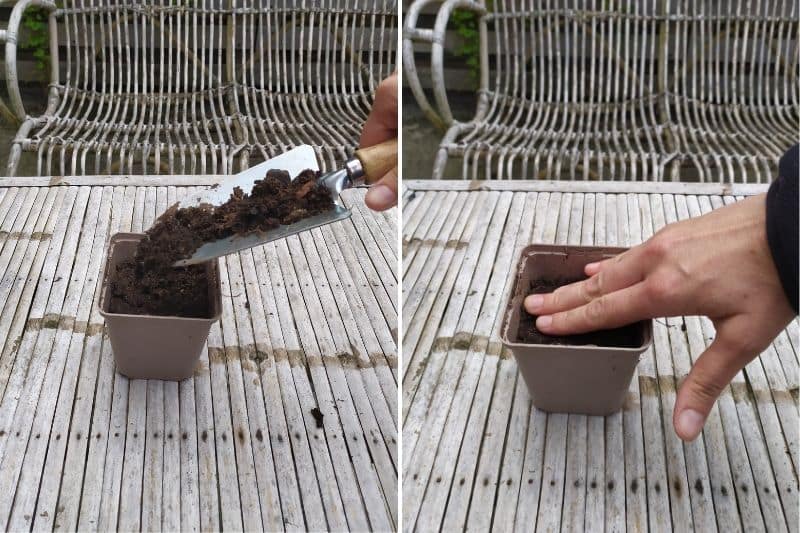
Fill buckets with compost and firm down
2) Using the spray bottle, moisten compost, preferably with rainwater.
3) Scatter 3 to 4 seeds on the surface.
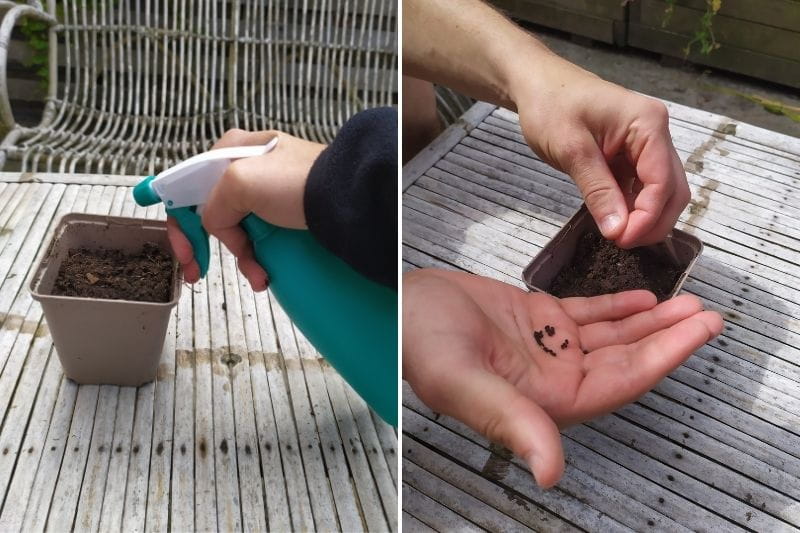
Moisten compost and scatter a few sage seeds
4) Cover seeds with a thin layer of compost, between 0.5 cm and 1 cm, then press down gently.
5) Water again, but sparingly.
6) Place buckets in a greenhouse, conservatory or a room in your home. Sage seeds need at least 18°C to germinate. Germination can take between 20 and 25 days. Meanwhile, compost should remain slightly moist, not waterlogged.
7) Once seedlings appear, place pots in direct light, in a greenhouse or on a south-facing windowsill. Beware, compost dries faster in full sun! Watch watering carefully. Not too much, not too little.
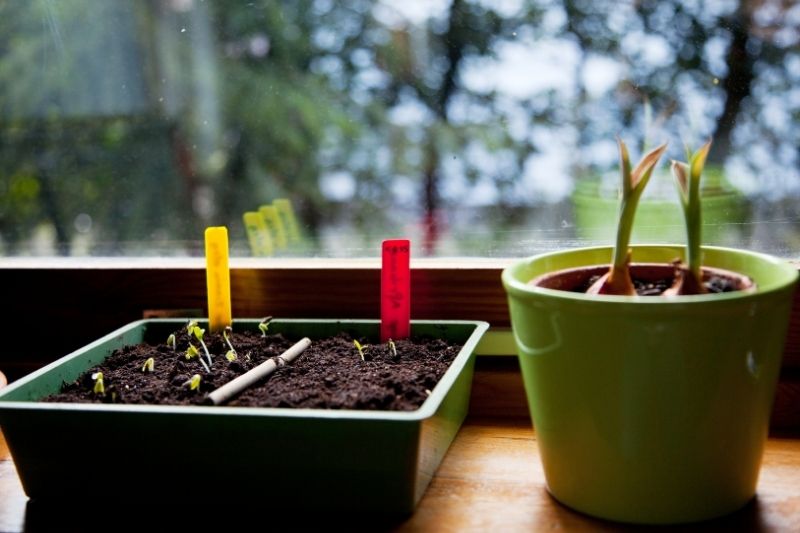
place young shoots in light
8) When plants measure 2 to 3 centimetres, thin out the plantings. Keep only one young plant per bucket, removing other shoots.
Tip: Put plants outside during daytime when temperatures exceed 12°C. This will harden them so they cope better with weather once planted out. Bring plants in at dusk to spend night in warmth.
9) After a few weeks, transplant young sages to garden or a larger pot, once frost risk has passed, usually after 15 May. Also wait until plants are large enough and well rooted to handle.
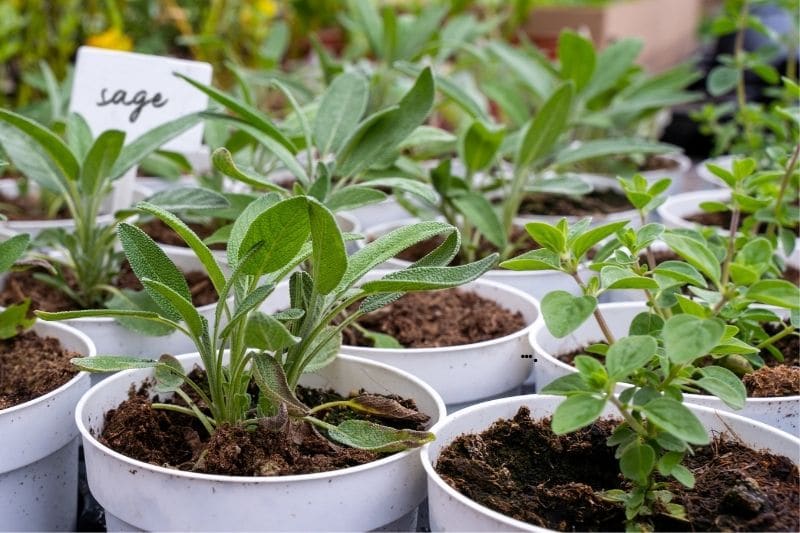
From left to right: common sage and bushy sage in pots
How to sow sage directly in the ground?
Required tools
- A spray bottle or a watering can with a fine rose;
- A rake;
- Tools to prepare and aerate soil: spade, broadfork, hoe, etc.;
- sage seeds;
- Optional but recommended: well-rotted compost or potting compost;
Steps for sowing sage in the ground
1) Choose a sunny, warm spot. Sage needs warmth to germinate well.
2) Prepare soil by loosening with a broadfork or spade.
3) Rake soil with rake to obtain a fine tilth.
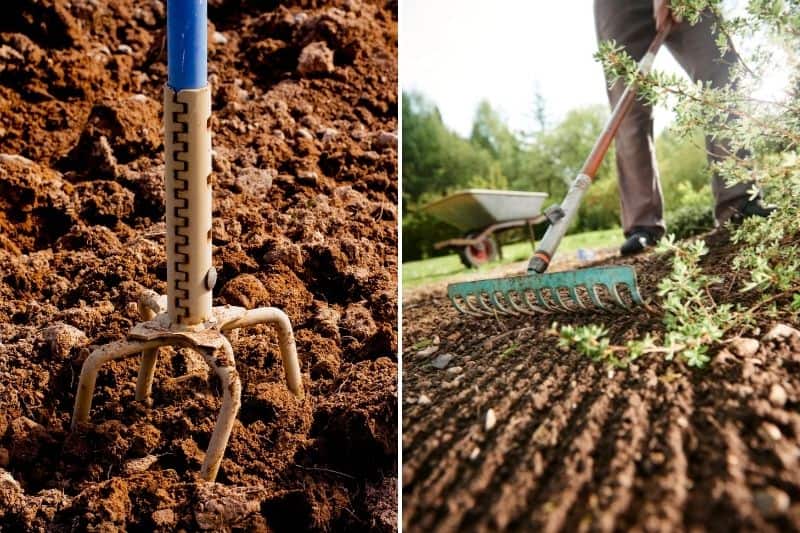
Preparing soil is a crucial step for sowing sage seeds
4) You can add well-rotted compost to enrich soil or a little compost. If soil is heavy or clayey, also add coarse sand for planting to improve drainage.
5) Water soil, preferably with rainwater.
6) Place seeds in small groups on soil, i.e. small heaps of 4 to 5 seeds. Space these seed groups 40 cm apart.
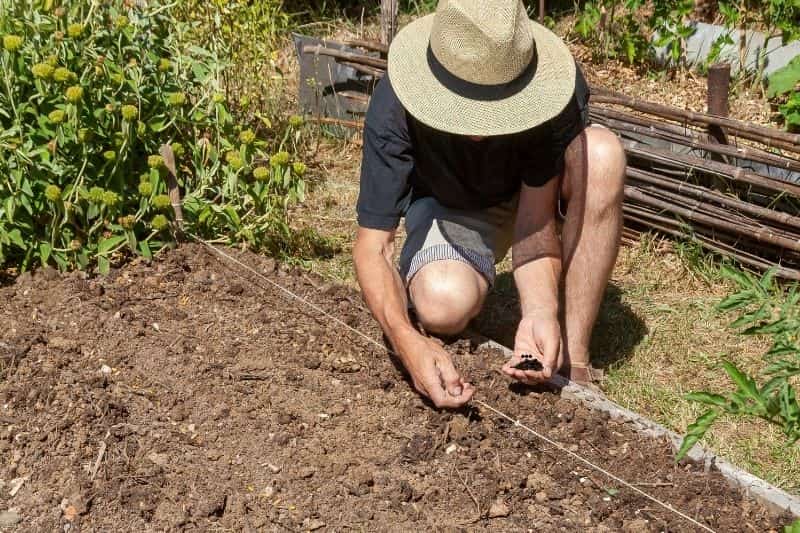
Sow seeds in small groups
7) Cover seeds with a thin layer of compost or soil. This layer should be between 0.5 and 1 cm thick.
8) Water again, more lightly so as not to disperse seeds. Use a spray bottle for gentleness if possible.
9) Keep soil consistently moist, but not waterlogged, until germination. Seedlings will appear after 20 to 25 days if temperatures are favourable (above 18°C by day).
10) When seedlings reach a few centimetres, thin out each group. Keep only one seedling per group, removing others.
To go further:
- Discover our range of sage seeds, as well as our potted sages.
- Find everything to know about sages: planting, pruning and maintenance.
- Need help choosing? See our advice sheet "Sages: which varieties to choose?"































![[plant_label]Sow[/plant_label] [plant_name]sage[/plant_name] sowing salvia: tips and technique](https://en.promessedefleurs.eu/blogwp/wp-content/uploads/2022/07/Semer-une-sauge-3.jpg)
Comments